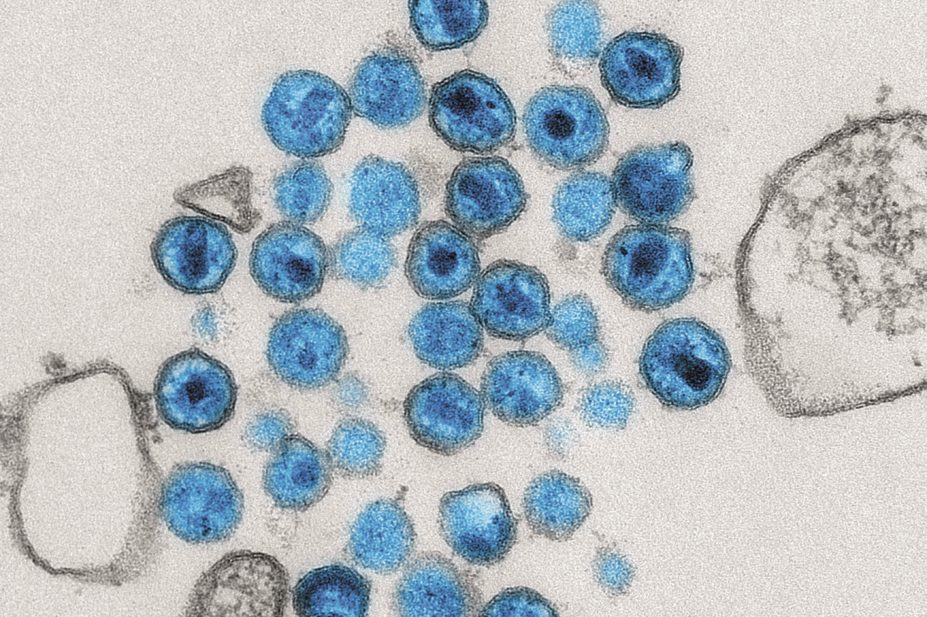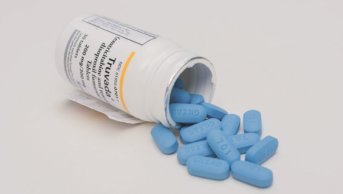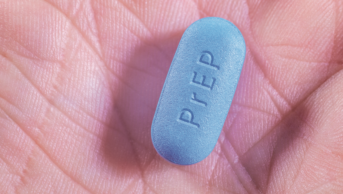
Cultura RM / Alamy Stock Photo
Effective antiretroviral therapy (ART) virtually eliminates the risk of HIV transmission to an uninfected partner, according to a study of serodiscordant couples.
There were no instances of within-couple HIV transmission after more than a year of follow-up, despite all couples reporting routinely having sex without a condom.
Lead author Alison Rodger, a senior lecturer and honorary consultant in infectious diseases at UCL, says the results of the study aren’t intended to tell serodiscordant couples whether to use condoms but can help them to make an informed decision.
“For both heterosexual and gay couples, however, the study also demonstrates that if you are HIV-negative and have sex without condoms you may be infected if you are unaware of your sexual partner’s HIV status and ART status; condoms will reduce the risk of this,” says Rodger.
The study, reported in JAMA
[1]
(online, 12 July 2016), involved 888 serodiscordant couples from 14 European countries; 548 were heterosexuals and 340 were men who have sex with men (MSM). All couples regularly had sex without a condom before entering the study, but were counselled to use condoms by clinic staff. The HIV-infected partner in each couple was receiving ART and had a confirmed suppressed viral load (HIV-1 RNA <200 copies/mL).
Over a median follow-up of 1.3 years, there were approximately 36,000 instances of condomless sex within heterosexual couples and 22,000 within MSM couples. Uninfected partners were tested every 6 to 12 months for HIV.
During the study, 11 HIV-negative partners became HIV-positive; one of these was in a heterosexual couple and ten were in MSM couples. However, by genetically analysing the virus from both partners in each instance, the researchers showed that none of these transmissions had occurred within the couple but that the virus had been acquired from a different partner. Eight of the individuals who acquired HIV reported having condomless sex with other partners.
Although previous studies have shown low rates of HIV transmission when the HIV-infected partner has a suppressed viral load in serodiscordant couples, these primarily involved heterosexual couples. There had previously been no data on rates of transmission through anal sex with suppressive ART, even though the risk of HIV transmission without ART is around ten times higher in anal intercourse than vaginal intercourse.
Additionally, rates of reported condom use in earlier studies reached as high as 93%, meaning the reduction in HIV transmission could not be attributed to ART alone.
The researchers say the results show that in serodiscordant heterosexual couples, the risk of HIV transmission to the uninfected partner is likely to be negligible provided that the HIV-positive person is on fully suppressive antiretroviral therapy, has been so for several months and maintains full compliance with their prescription.
They say the same is likely to be true for MSM couples too, but longer follow-up is needed for statistical purposes to accurately estimate the risk. The second phase of the study, which will involve only MSM couples, is ongoing until the end of 2017 for this purpose.
Rodger says more needs to be done to identify all HIV-positive individuals and to get them access to HIV care and ART.
“There remains a substantial number of HIV-positive people that remain undiagnosed, and we need to intensify the efforts of testing of the population to make the diagnosis as soon as possible after the infection is first contracted.
“Only when these efforts have substantially reduced the number of undiagnosed people and all barriers to access to ART are removed, can we expect to have the pandemic HIV transmission under control.”
Michael Brady, medical director at Terrence Higgins Trust, says the study results will have a positive impact on the lives of people living with HIV.
“The landmark findings from this study will give confidence to people living with HIV who want to date, start a family and have a happy, healthy sex life without fear of passing HIV on to their partner,” says Brady.
He says the results are one of the biggest developments in our knowledge of HIV since the introduction of ART. “It has the potential to dispel the stigma, discrimination and myths that so many people living with HIV face on a daily basis; especially around the risk of HIV transmission.”
References
[1] Rodger AJ, Cambiano V, Bruun T et al. Sexual activity without condoms and risk of HIV transmission in serodifferent couples when the HIV-positive partner is using suppressive antiretroviral therapy. JAMA 2016;316:171–181. doi: 10.1001/jama.2016.5148


